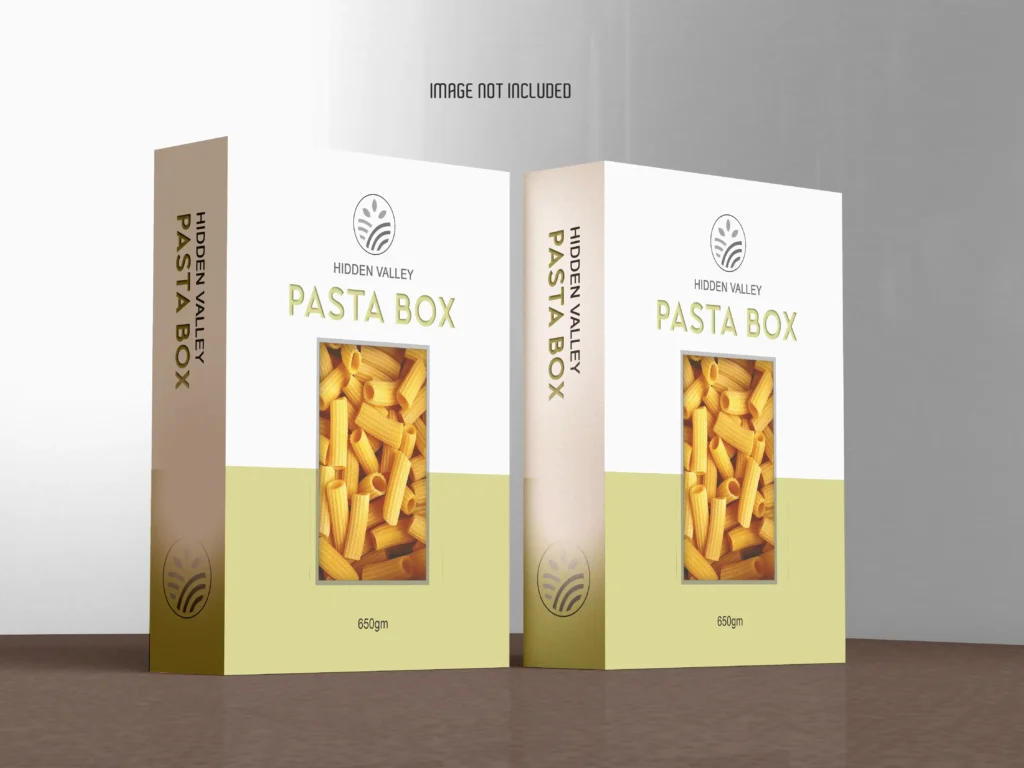Are you trying to make your packaging more sustainable but are not sure where to start? It can be confusing. CO2 neutral printing is a clear, effective way to make a real difference.
CO2 neutral printing means balancing the carbon dioxide emissions produced during the printing process. This is done by calculating the emissions and then investing in environmental projects that reduce or capture an equal amount of CO2. It makes your packaging's print production truly climate-friendly.

It's a challenge for any brand to stand out as genuinely eco-conscious. Customers are smart and can often see through vague "green" claims. You need something concrete to show your commitment. I've seen many clients struggle with this exact problem. They want to do the right thing, but they also need a method that is credible and that they can talk about proudly. This is where moving beyond just using "recyclable materials" and into measurable climate action becomes so important for your brand's story and impact.
How Does CO2 Neutral Printing Actually Work?
You hear the term "CO2 neutral" and it sounds great, but what does it really involve? It feels complicated. I believe understanding the process is the first step to trusting it.
The process involves three key steps: first, calculating all carbon emissions from a print job; second, reducing those emissions where possible; and third, offsetting the remaining, unavoidable emissions by funding certified climate protection projects. This makes the entire print job "neutral" in its carbon impact.

In my 16 years in the packaging industry, I've learned that the best solutions are the ones you can clearly explain. CO2 neutral printing is exactly that. It’s not magic; it’s a straightforward process of accounting for environmental impact. It starts by looking at every single step of printing your package. Think about the paper production, the energy used by the printing machines, the inks, and even the transportation needed to get the final product to you. Once we have a number for the total carbon footprint, we first try to shrink it. Maybe we use a more efficient machine or switch to paper with a higher recycled content. But some emissions are just unavoidable. That’s where the final step, offsetting, comes in. It’s a powerful and accountable way to take responsibility for the remaining impact.
Deeper Dive: The Three Pillars of CO2 Neutrality
| Pillar | Description | My Experience |
|---|---|---|
| 1. Calculate | Specialized software is used to measure the CO2 emissions of a specific print job. This includes the entire lifecycle: raw material extraction (like wood for paper), energy consumption during printing, ink and coating production, and transportation logistics. | When I first ran this calculation for a client, they were shocked to see how much transport contributed. It’s not just about the factory; it's the whole supply chain. Accuracy here is key to making a real impact. |
| 2. Reduce | Before offsetting, the priority is to lower the emissions directly. This can involve using FSC-certified or recycled paper, switching to vegetable-based inks, using renewable energy to power the printing facility, and optimizing print runs to minimize waste. | We constantly work on this at Giftspack. Simple changes, like consolidating shipments or using a lighter-weight paperboard that doesn't compromise quality, can reduce a project's footprint significantly before we even think about offsetting. |
| 3. Offset | The remaining, unavoidable CO2 emissions are "neutralized" by purchasing carbon credits. These credits fund certified climate protection projects around the world, such as reforestation, wind farms, or providing clean cooking stoves in developing nations. | I always advise clients to look for projects certified by standards like the Gold Standard or VCS. It ensures the money is actually funding real, measurable, and verified carbon reduction. We helped a client offset their packaging by investing in a wind energy project in India. |
What Are the Real Benefits of CO2 Neutral Printing for My Brand?
You might wonder if customers will even notice or care about CO2 neutral printing. Is it worth the effort? From my experience, not only do they notice, but it can also be a deciding factor.
Adopting CO2 neutral printing significantly boosts your brand's reputation. It demonstrates a genuine commitment to sustainability, attracting environmentally conscious consumers and setting you apart from competitors who only make vague green claims. It’s a clear, marketable proof point of your brand's values.

I remember working with a cosmetics brand a few years ago. They were launching a new organic skincare line, and their target audience was very focused on wellness and environmental health. They decided to use CO2 neutral printing for their packaging. They were able to put a small, official "Climate Neutral Print" logo on the box. This small detail became a huge part of their marketing. It wasn't just a claim; it was backed by a certificate and a specific project they helped fund. Their customers loved it because it was transparent. It showed the brand was willing to go the extra mile, and it aligned perfectly with the values of the product inside the box. It turned their packaging from just a container into a statement of purpose.
Deeper Dive: Comparing the Business Impact
| Feature | Standard Packaging Approach | CO2 Neutral Packaging Approach |
|---|---|---|
| Brand Perception | May be seen as neutral or, increasingly, as lagging behind on environmental issues. Vulnerable to accusations of "greenwashing" if sustainability claims are not backed by action. | Perceived as a responsible, forward-thinking leader. The brand story becomes more powerful and authentic, building trust and loyalty with customers who share these values. |
| Customer Connection | The connection is purely transactional and based on the product itself. There is no added value from the packaging in terms of brand ethos. | Creates an emotional connection. The customer feels good about their purchase, knowing it aligns with their own values. The packaging becomes part of a positive brand experience, encouraging repeat business. |
| Marketing Advantage | Limited to product features and price. Competes on a crowded playing field where it is hard to stand out. | Provides a unique selling proposition (USP). You can actively market your climate-neutral status on your website, social media, and on the package itself. This attracts a growing market segment and justifies a premium price. |
| Risk Management | At risk of being called out by savvy consumers or regulators for a lack of environmental responsibility as sustainability standards become stricter. | Proactively addresses climate impact, reducing reputational risk. It positions the brand favorably for future environmental regulations and partnerships with eco-conscious retailers. |
How Can I Get Started with CO2 Neutral Printing for My Brand?
Knowing the benefits is one thing, but how do you actually implement this? It can seem daunting to start. But I assure you, it’s a clear path if you have the right partner.
To start with CO2 neutral printing, you need to partner with a packaging supplier who offers this service. They will handle the carbon calculation for your project, manage the offsetting process through certified channels, and provide the official labeling for your packaging.

The most important step is finding a packaging company that has this capability built into their process. You shouldn't have to figure this out on your own. A good partner will make it a simple option for any project. For example, when a client like Peter, a product designer, comes to me, he has a vision for the box's design and structure. My job is to present him with options not just for materials and finishes, but also for the product's end-of-life and its impact during creation. Offering a "CO2 neutral" option is a key part of that conversation. It moves the discussion from just cost and aesthetics to one about shared values and brand storytelling. It’s about making sustainability an easy choice.
Deeper Dive: Your Action Plan for Implementation
-
Find a Knowledgeable Packaging Partner: The first step is to engage with a supplier who is an expert in this area. Don't be afraid to ask them hard questions. Ask them which certification standards they use (like Gold Standard, VCS). Ask them to show you examples of projects they have done. As a designer or brand manager, you need a partner who can guide you, not just take an order. Your packaging partner should be able to provide all the documentation you need to feel confident in the process.
-
Request a "Climate Neutral" Quote: When you submit your project for a quote, specifically ask for a CO2 neutral option. Your supplier will then use their software to calculate the carbon footprint based on your specific dimensions, materials, and print run size. They should present the cost for offsetting as a separate, transparent line item. I've found that the cost is often surprisingly low—usually a very small fraction of the total project cost—but the value it adds to the brand is immense.
-
Choose Your Impact (Optional but Recommended): Some of the best programs allow you to have a say in what kind of climate project you want to support. You might choose between reforestation in South America, wind power in Asia, or clean water access in Africa. This allows you to tailor the story to your brand. For instance, a coffee brand might choose to support a project in a coffee-growing region. It creates a more authentic and compelling narrative that you can share with your customers.
-
Communicate Your Commitment: This is the final, crucial step. Once your packaging is produced, you have earned the right to talk about it. Work with your supplier to get the correct "CO2 Neutral" or "Climate Neutral" logo to print on your packaging. Then, tell the story. Write a blog post, create a page on your website explaining what you did, and share the certificate. This transparency is what builds deep trust with your customers.
Conclusion
CO2 neutral printing is more than just a trend; it's a practical, measurable step to create truly sustainable packaging and build a brand that resonates with today's conscious consumer.






